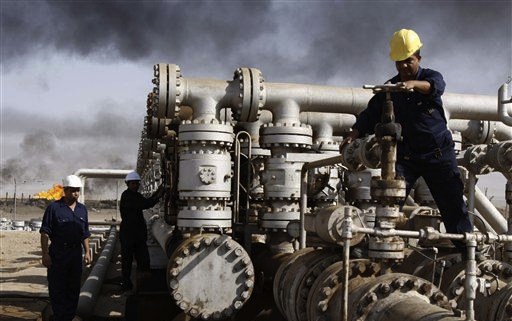The North Dakota Way

Wikimedia Commons
Fargo is an unlikely candidate for the next great American city. The metropolitan area population is slightly higher than that of Yonkers. The nearest major airport is 250 miles away, in Minneapolis. Its largest company is a local subsidiary of John Deere. But the provincial image belies surprising—and substantial—changes. The city’s population grew by 20.25% between 2000 and 2010, more than twice the national average. In 2009, during the height of the recession, housing prices soared 22.2% up from the year prior, while the nation as a whole slumped 3%. Local political and business leaders even mull the idea of the “next Silicon Valley” being Fargo. “I don’t think people realize how much we’re driving technology development,” remarked Senator John Hoeven.
What is driving Fargo’s, and the state of North Dakota’s, rapidly improving economic prospects is oil. And lots of it. North Dakota’s oil reserves are concentrated in the northwest of the state, in the Bakken shale rock formation, and are currently estimated to contain up to 24 billion barrels of oil. If current estimates hold true, the Bakken field will produce about one million barrels of oil a day, a distinction shared with only six other oil fields in the world.
Another distinction that North Dakota holds is its GDP growth rate, which, at 7.4%, is comparable to that of China, and which is by far the largest in the United States. Conversely, its unemployment rate, at 3.2%, is the lowest in the nation. From November 2007, just before the start of the recession, to December 2012, employment in North Dakota rose 6.7 percent, while nationally employment is fell by 2.2 percent. In short, North Dakota is booming. And the growth is not only confined to oil. Between 2007 and 2010, the number of employer firms declined by 5.2 percent per annum. In North Dakota, however, the number of employer firms actually rose by 1.6 percent per annum. The largest sector of growth in the second half of 2012 was not, the energy sector, but actually the hotel and food services sector.
Of course, in fossil fuel booms like these, ancillary industries will see strong growth as well, which explains the soaring housing prices and the boom in hotels, restaurants, and as noted in a recent piece in Slate magazine, strip clubs. But the boom is extending beyond the energy sector and its derivatives. This includes the
tech boom in and around Fargo, which is estimated to create 8,000 jobs in the upcoming years. Microsoft alone is planning to add 1,000 jobs in the next five years. The oil boom, in other terms is stimulating the other sectors of the economy, funneling investment into agriculture, manufacturing, services, and tourism, which have traditionally been the largest sectors in North Dakota’s economy.
North Dakota’s government, too, is dramatically benefiting from this boom. In 2012 the state boasted a fiscal surplus of $1.6 billion, on top of $1.9 billion in a provident fund and $1.2 billion in tax cuts and infrastructure spending. The government has used these funds to make loans to local businesses seeking to expand and to entrepreneurs from across the state and even out of state. Further investments in higher education are strengthening the manufacturing and tech sectors, but also bringing an end to the flight of young people out of the state and instead marking the advent of “boomerangers” returning to their home state.
While the United States cannot reasonably expect to have 7.4% GDP growth or 3.2% unemployment, it can reasonably expect to gain some of the same benefits, on a national scale, that North Dakota does locally. US oil production is on a steep ascent; by 2017 the United States is expected to become the world’s largest oil producer. And this oil is being produced in cleaner and more efficient ways than ever before. Halliburton has developed a hydraulic fracturing machine that uses gravity and electricity generated from solar panels to send sand down to fracture seams. GE has developed the Mobile Evaporator, a mobile boiler that can be transported from well to welland can clean around 50 gallons of water per minute by boiling it to separate out contaminants.
The Obama administration has shown hesitance to embrace this upsurge, and it there is little good reason for it. It is estimated that the federal government could earn over $18 trillion in royalties, over time, from oil and natural gas revenues. One million jobs could be created in the next seven years in the oil and natural gas industries. The Administration is currently prioritizing automobile fuel efficiency. That is a heartening prospect—fuel efficiency means we can use less and emit less carbon into the atmosphere. It is pursuing the development of alternative energies, which too is encouraging—eventually, the oil will run out. But it does not mean we should deny ourselves an economic windfall. It does not mean that multi-million fines should be imposed for a sole (un-endangered) bird getting stuck in an oil pit—particularly when thousands are killed by wind turbines.
The United States has the opportunity to gain the chance to make a substantial investment in its future, and the potential to make investments off those investments. North Dakota, although in an exaggerated form, shows what this can portend. And that example suggests those portents are good.
